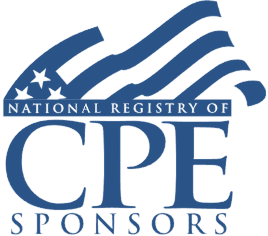Welcome! Save 30% on all CLE, CPE, and Professional Skills webinars, plus 15% off any annual pass with code HOLIDAY25
About the Course
Introduction
This CLE/CPE course will provide tax counsel and advisers with an in-depth analysis of the loss limitation rules of Section 461(l) for non-corporate taxpayers passed in the 2017 tax reform bill. The panelist will discuss what items are included or excluded in the business loss calculations, the effect of such a loss and its carryover to other taxable years, and the interactions with the passive activity loss rules and the Section 199A pass-through business income deduction.
Description
The 2017 tax reform legislation enacted the excess business loss (EBL) limitation rule of new Section 461(l). Despite the amount of revenue that this tax provision is expected to raise, the EBL rules have not received a significant amount of attention from the IRS and Treasury.
Section 461(L) disallows the current deduction of any EBLs, which are generally the excess of the taxpayer's aggregate deductions attributable to trades or businesses over the sum of (1) the taxpayer's aggregate gross income or gain attributable to such trades or businesses, and (2) $250,000 ($500,000 in the case of a joint return).
In other words, net business losses may offset only up to $250,000 or $500,000 of investment income and other non-business income. Significant questions have arisen over what tax items will be considered business versus non-business for this purpose. Various tax items such as wages and salaries, gain on the sale of partnership interests or S corporation stock, cancellation of debt (COD) income, and the Section 199A pass-through business income deduction, will have to be carefully considered in light of the EBL rules.
EBLs are carried forward as a net operating loss (NOL), but there is some uncertainty and debate over how to apply the carryover rules. In any case, the NOL can offset only up to 80% of pre-NOL taxable income in the carryover year.
Listen as our experienced panelist provides a practical guide to the current state of Section 461(l) as it applies to non-corporate taxpayers.
Presented By

Mr. Zhang is a tax partner in Fried Frank's New York office. Prior to joining the firm in 2019, he was a tax partner at Roberts & Holland LLP. He works on a diverse range of real estate, corporate, and international taxation matters. He represents real estate investment trusts (REITs) and other companies on tax-free reorganizations, spin-offs, cross-border joint ventures, complex leases, and other tax-efficient transactions. He also advises clients about tax credits, state and local transfer taxes, and qualified opportunity zones.
-
This 90-minute webinar is eligible in most states for 1.5 CLE credits.
-
CPE credit is not available on recordings.
-
BARBRI is a NASBA CPE sponsor and this 90-minute webinar is accredited for 1.5 CPE credits.
-
BARBRI is an IRS-approved continuing education provider offering certified courses for Enrolled Agents (EA) and Tax Return Preparers (RTRP).
-
Live Online
On Demand
Date + Time
- event
Wednesday, October 2, 2019
- schedule
1:00 PM E.T.
- Key provisions of Section 461(l) and its effect on EBL and carryover
- Business vs. non-business tax items and calculating EBL
- Interactions with other Code provisions
- Potential challenges and unanswered questions awaiting IRS guidance
The panelist will review these and other key issues:
- Computing EBL and related Code provisions
- Treatment of partnership and S corporation items for their partners and shareholders
- The intersection of EBL with Section 199A qualified business loss carryovers
- Impact of Section 461(l) on passive and non-passive activities
Learning Objectives
After completing this course, you will be able to:
- Determine how to calculate EBL within a partnership setting
- Discern how the EBL limitations and caps on deductibility of NOL carryforwards can create tax liability in years that previously would have had current year tax obligation
- Identify how to allocate disallowed EBLs as NOL carryforwards on a partner-by-partner basis
- Field of Study: Taxes
- Level of Knowledge: Intermediate
- Advance Preparation: None
- Teaching Method: Seminar/Lecture
- Delivery Method: Group-Internet (via computer)
- Attendance Monitoring Method: Attendance is monitored electronically via a participant's PIN and through a series of attendance verification prompts displayed throughout the program
- Prerequisite: Three years+ business or public firm experience at mid-level within the organization, preparing complex tax forms and schedules; supervisory authority over other preparers/accountants. Working knowledge of partnership/corporate structure. Foundational knowledge and understanding of calculating and reporting net operating losses for individuals and businesses; familiarity with Sec. 382 limitations and alternative minimum tax.

BARBRI, Inc. is registered with the National Association of State Boards of Accountancy (NASBA) as a sponsor of continuing professional education on the National Registry of CPE Sponsors. State boards of Accountancy have final authority on the acceptance of individual courses for CPE Credits. Complaints regarding registered sponsons may be submitted to NASBA through its website: www.nasbaregistry.org.

BARBRI is an IRS-approved continuing education provider offering certified courses for Enrolled Agents (EA) and Tax Return Preparers (RTRP).

BARBRI CE webinars-powered by Barbri-are backed by our 100% unconditional money-back guarantee: If you are not satisfied with any of our products, simply let us know and get a full refund. Contact us at 1-800-926-7926 .
Unlimited access to premium CLE courses:
- Annual access
- Available live and on-demand
- Best for attorneys and legal professionals
Unlimited access to premium CPE courses.:
- Annual access
- Available live and on-demand
- Best for CPAs and tax professionals
Unlimited access to premium CLE, CPE, Professional Skills and Practice-Ready courses.:
- Annual access
- Available live and on-demand
- Best for legal, accounting, and tax professionals
Unlimited access to Professional Skills and Practice-Ready courses:
- Annual access
- Available on-demand
- Best for new attorneys
Related Courses

Structuring Tiered Partnerships: Advanced Tax Planning Strategies, Avoiding Tax Traps
Thursday, January 8, 2026
1:00 p.m. ET./10:00 a.m. PT

Tax Fundamentals of Pass-Through Entities: Key Tax Provisions, Limitations, and Compliance
Thursday, January 29, 2026
1:00 p.m. ET./10:00 a.m. PT
Recommended Resources

How CPE Can Bridge the Gap Between What You Know and What You Need to Know
- Career Advancement

Gain a Competitive Edge Through Efficient CPE Strategies
- Learning & Development
- Business & Professional Skills
- Career Advancement

